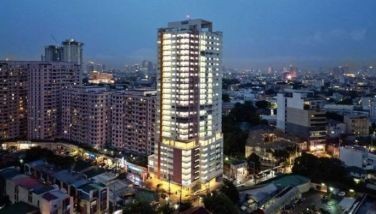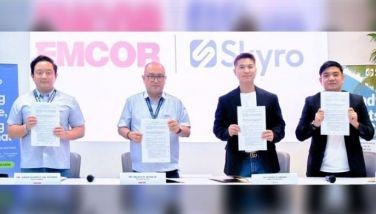Pilot-test of organized bus route set July 25
MANILA, Philippines - The Metropolitan Manila Development Authority yesterday announced that pilot-testing of its fully automated Organized Bus Route program is set on July 25.
MMDA Traffic Operations Center Executive Director Angelito Vergel de Dios said the enhanced OBR system will be initially tested on four bus terminals in Metro Manila – Baclaran, Alabang, Malabon and Fairview.
Each OBR terminal is fitted with two readers of radio frequency identification device (RFID), microchip tracking devices that were previously installed on about 2,600 buses operating in Metro Manila. “Initially, we will start on four terminals, preferably along EDSA. We have installed servers there that will be able to track and record RFID-equipped buses passing through our OBR terminals,” Vergel de Dios said. He noted that over the years, the OBR has undergone major improvements, from numbered cards manually issued to each bus on various checkpoints to the recent introduction of RFID.
OBR, introduced by the agency in 2003, is the regulated dispatch of buses from designated terminals so as to control the number of buses clogging EDSA and other major thoroughfares. Buses are fielded on intervals, depending on passenger volume in certain areas.
Vergel de Dios said that once a bus enters an OBR terminal, its entry will be recorded by the RFID reader. Each bus is given five to 10-minute interval to load or unload passengers. Each bus’ exit from the terminal is controlled by Metrobase, the MMDA’s command and communication center in Guadalupe, Makati City, which will dispatch the buses depending on the current traffic condition along the buses’ routes.
He said the RFID-equipped buses will be continuously tracked by Metrobase until they pass through the next designated loading bays. An OBR terminal/loading is also equipped with cameras connected to Metrobase. “There’s no escape here. Once a bus enters an OBR terminal, it will be required to go to the next loading bay. The RFID will keep track of all its movements,” he said.
The RFID will keep a record of the buses’ entry and exit from terminals. At the end of the day, the MMDA will be able to determine if an erring bus driver bypasses a certain terminal, which constitutes an OBR violation that has a corresponding fine of P1,000, according to Vergel de Dios. The MMDA official said plans are also being studied to include provincial buses, and possibly jeepneys, in the fully automated OBR program. The OBR program, especially its RFID component, has also helped the MMDA identify colorum buses since only legitimate and duly franchised buses are given RFID chips.
There are more than 3,000 buses plying EDSA everyday, making an estimated 32,000 trips daily.
The automated OBR was developed to complement the installation of traffic surveillance cameras throughout Metro Manila under the MMDA’s “Road Safety Surveillance System and Wireless Communications Backbone.” The wireless cameras are linked to Metrobase for 24-hour traffic monitoring as well as determine traffic buildups and the needed number of buses to be deployed on EDSA and other major roads.
The cameras have been initially installed on key intersections of EDSA, Macapagal Boulevard, Roxas Boulevard, Pasay Road, Ayala Avenue, Orense Street in Makati, Ortigas Avenue, Santolan Road, Aurora Boulevard, Timog and East avenues, Quezon and North avenues, Roosevelt and Congressional Avenue, Balintawak, Rizal avenue, Elliptical Road, Philcoa and Kalayaan and Visayas avenues. – With Dennis Carcamo
- Latest
- Trending














